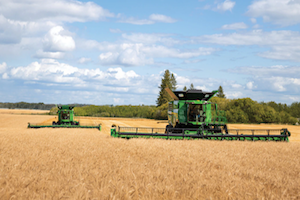Corn and soybean producers continue to show an interest in using extended crop rotations to improve overall soil health. Now, members of Iowa State University's departments of sociology and agronomy have further researched farmers' perspectives on the benefits and barriers of extended rotations. Their research was published in the Journal of Agricultural and Environmental Letters.
"Before the widespread use of internal combustion engine tractors and synthetic fertilizers and pesticides, extended rotations were key to soil fertility and pest control," said J. Arbuckle, professor of rural sociology and extension sociologist at Iowa State. "While the shift to a fossil-fuel-based system of cultivation, fertility and pest control reduced labor needs, over time, it has also resulted in unintended consequences such as contaminated water bodies, pesticide resistance, greenhouse gas emissions, and degraded soils. Use of extended rotations could help to reverse some of those harms."
The report's authors determined that the use of extended rotations – specifically those that utilize small gains and forages – can have a positive agronomic and environmental impact. However, this does not negate the obstacles that still exist for producers who wish to use them.
"Almost all farmers surveyed understand that extended rotations can improve soil health while reducing the need for inputs such as fertilizers and pesticides," said study co-author Matt Liebman, professor of agronomy at Iowa State. "That said, they also recognize that there are major barriers to their use, such as lack of markets, lagging research on small grains and forages breeding, and a shortage of technical know-how among agricultural retailers and other crop advisers."
Ultimately, the researchers believe that efforts to promote extended rotations with small grains and forages will likely require changes in agri-food policies, programs, and markets.
